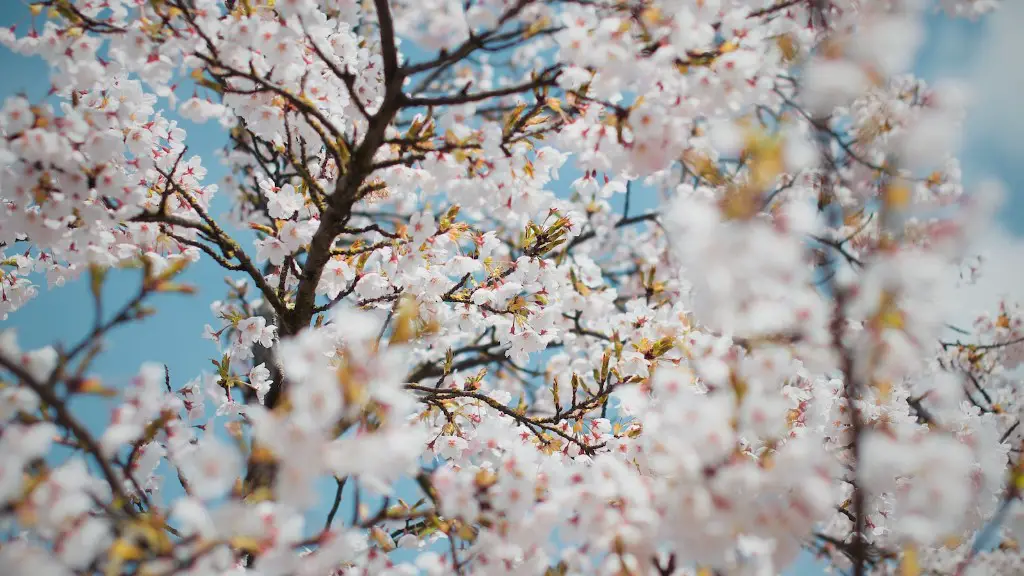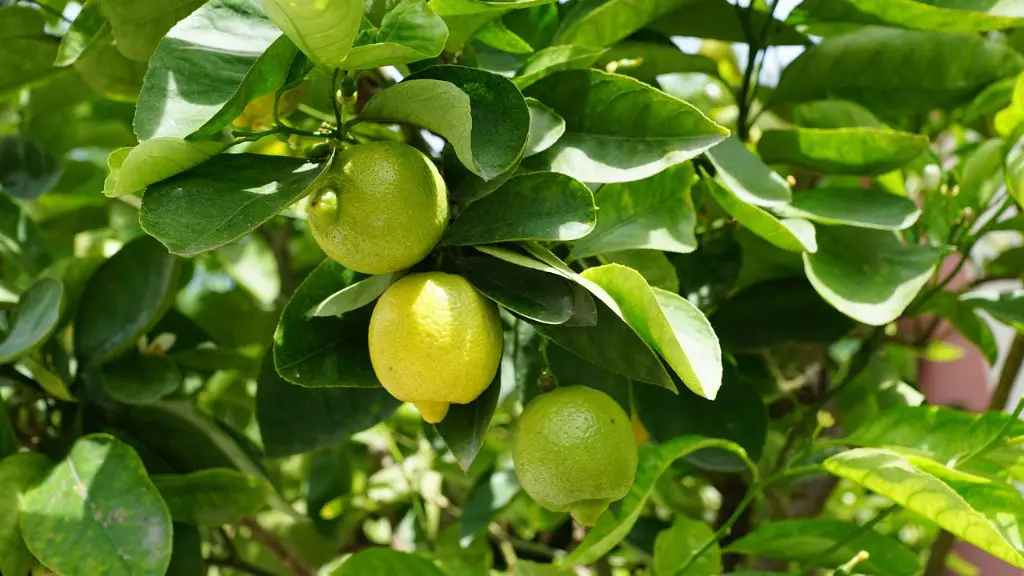Cherry tree branches are often necessary to prune for the healthy growth of the tree. Pruning helps the tree to develop the correct shape, reduces the risk of disease, and encourages fruiting. When pruning cherry trees it is important to understand the basics of pruning, and to follow the tree’s natural form.
When pruning cherry tree branches it is best to start by examining the tree’s canopy. Ideally, the tree crown should be open and even, and no single branch should be particularly thicker or longer than the others. This will ensure even canopy distribution and healthy growth.
To avoid damaging the tree, it is important to follow these guidelines when cutting cherry tree branches. First of all, always use a sharp pruning saw or sharp pruning shears. Dull tools can crush or mangle bark, rendering it vulnerable to virus and disease. Secondly, follow the natural form of the branch when pruning. Avoid cutting off excess branches as this can lead to crown collapse. Lastly, always cut just above a bud or leaf as this will help to reduce damage to the branch and encourage new growth.
When cutting branches, try to keep the cuts as small as possible. Large cuts will open the branch up to disease and pests. When possible, it is best to cut branches gradually throughout the year to help the tree’s natural recovery process. Pruning during late winter or early spring is ideal to help promote fruit growth.
It is also important to be aware of the different types of pruning. Light pruning is best for young trees, and involves removing small branches and thinning the canopy. Heavy pruning is necessary for older trees and involves removing larger branches and reshaping the tree.
Finally, cherry tree pruning should only be undertaken by experienced tree pruners. Working with cherry trees can be dangerous, and inexperienced tree pruners can cause irreversible damage to the tree.
Safety Precautions
When pruning cherry trees it is important to take proper safety precautions. Always wear protective clothing when pruning, such as gloves, long-sleeved shirts, and sturdy shoes. In addition, never work on ladders or scaffolding without assistance, as this can be unsafe.
Also, never prune cherry trees when it is stormy or windy. Heavy winds can cause branches to swing and fall, leading to potential harm. When pruning cherry tree branches, it is also a good idea to have a spotter nearby to help watch for falling branches.
It is also important to never prune cherry trees when they are in bloom, as this can prevent them from producing fruit. It is best to wait until after the growing season before pruning.
Tools and Equipment
When pruning cherry tree branches, it is important to use the proper tools and equipment. A sharp, well maintained pruning saw or pruning shears are essential for clean and even cuts. For larger branches, it is essential to use a pole pruning saw. It is also important to always use a rope when pruning higher branches to help protect against accidental falls.
When using pruning saws, it is important to remember to always use a saw with a long handle. Never use a saw with a short handle, as this can prevent proper control and increase the risk of the saw slipping.
Finally, it is important to use the proper protective gear when pruning cherry tree branches. A hardhat, eye protection, and face protection are all recommended when pruning. In addition, leather gloves are important to help protect hands from cuts and splinters.
Cleaning After Pruning
It is essential to clean up properly after pruning cherry tree branches. Always remove any broken or cut branches from the ground, as these can become breeding grounds for pests and disease. In addition, it is a good idea to use a pruning sealant on any cuts to help protect the tree from further infection.
In addition, it is a good idea to rake up any mulch around the tree. Removing mulch can help to reduce the risk of disease, and will help the tree’s recovery process. Lastly, it is important to keep the area around the tree free from debris and litter, as these can all lead to potential harm.
Fertilizing After Pruning
Once pruning is complete, it is a good idea to fertilize the tree to help it recover. Ideally, a cherry tree should be fertilized after every pruning session. The best fertilizers to use are slow-release fertilizers such as compost or manure tea. These fertilizers will slowly release nutrients into the soil over time and will help to promote healthy growth.
In addition, it is a good idea to water the tree after pruning. This will help to keep the soil moist and help the tree recover faster. In order to avoid over-watering and drowning the roots, it is important to check the soil for dryness before watering.
Signs of Disease After Pruning
Although pruning can be beneficial for cherry trees, it can also lead to disease. Signs of disease after pruning can include discolored foliage, wilting, or cankers. It is essential to pay attention to these signs and take proper action to stop the spread of the disease. Pruning out diseased branches is often necessary, and it is important to do this in a timely manner to help prevent the disease from spreading.
In addition, it is important to look out for pests such as spiders and aphids after pruning. These pests can cause significant damage to cherry trees and can quickly spread. Spraying the trees with a pesticide can help to keep pests away, and it is important to do this on a regular basis.
Do’s and Don’ts
When pruning cherry trees it is important to follow some basic guidelines. Do always use sharp pruning tools and wear protective clothing. Don’t ever prune when the tree is in bloom, and don’t ever use tools with a short handle. Do make sure to clean the area after pruning, remove any broken branches, and fertilize the tree. Don’t overcrowd the tree with too many branches and don’t ever prune when it is stormy or windy.
It is also important to remember that pruning is a regular task. Pruning cherry trees should be done on a regular basis to ensure healthy growth and fruiting. Regular pruning can also help to reduce the risk of disease, and is essential for promoting the tree’s overall health.




